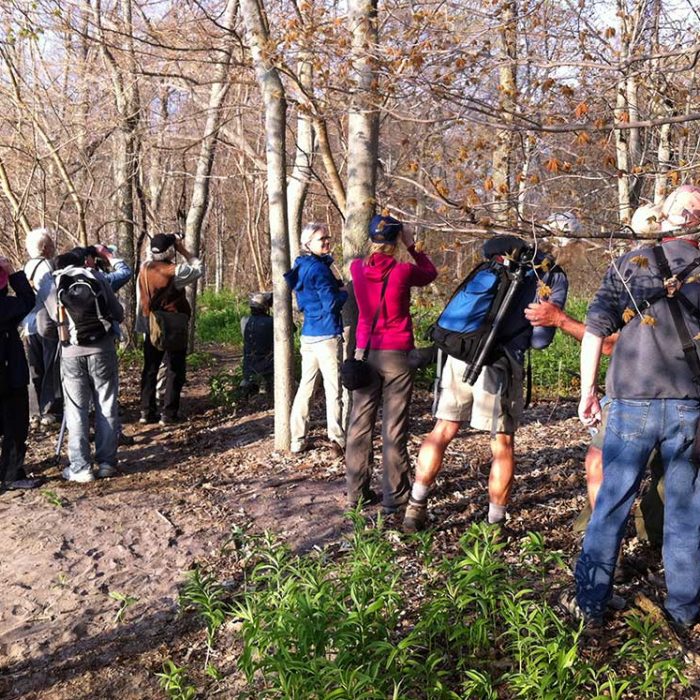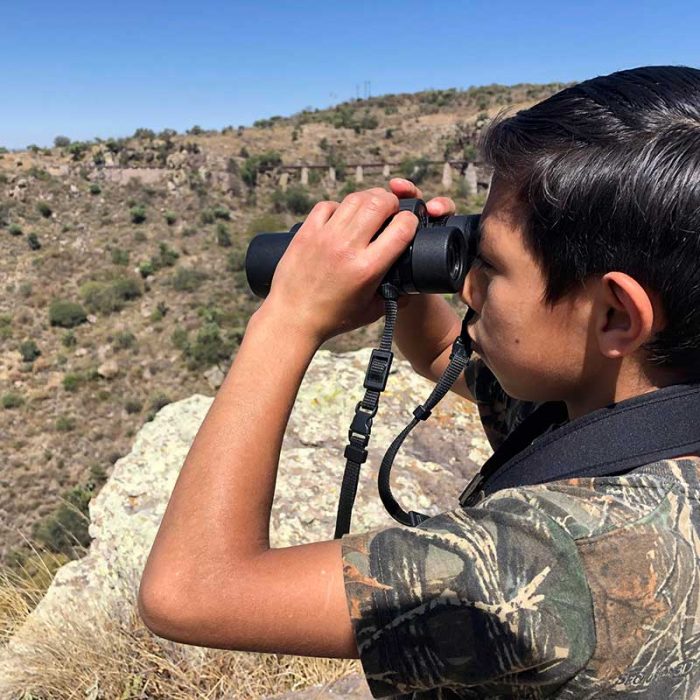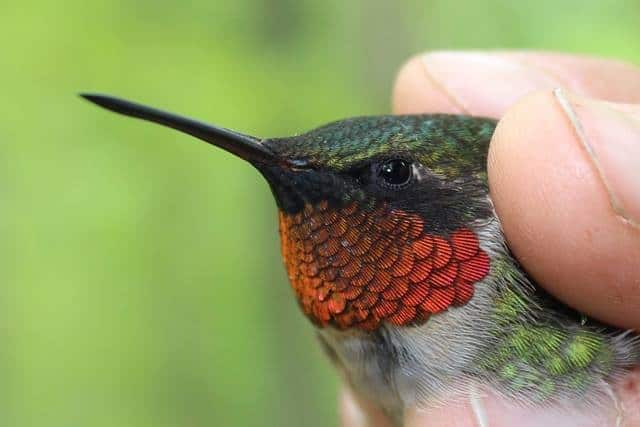In previous migration summaries (especially that of October 1st to 15th), we discussed how the warm temperatures experienced on Pelee Island this fall made PIBO’s field staff curious about their perceived late sightings of bird species during PIBO’s standard migration monitoring activities. Now that the fieldwork is finished for the year, we’ve had time to look through PIBO’s past records and examine the arrival and departure dates for a handful of species that we thought were of particular interest. As it turned out, many of the observations that we thought were unusually late, were not actually unusual at all! Still, there were three species that set PIBO records for remaining on Pelee Island later than usual: Yellow-billed Cuckoo, American Restart, and Black-and-white Warbler.
This migration summary takes a closer look at the arrival and departure dates for a small number of species. All of the information is taken from PIBO’s migration monitoring data and includes observations from the banding station and the daily census. It is possible that other birders on the island have seen these species on dates that are different from the ones below, but as PIBO’s migration monitoring is standardized (that is, we spend the same amount of time looking for birds each day during the migration seasons), it’s easier and more accurate to make comparisons from year to year. This is only a very cursory examination of departure dates, and does not have any kind of rigorous statistical backing: it’s presented for interest’s sake only.
Yellow-billed Cuckoos were last recorded on October 25th, which is the latest one has ever been observed by PIBO. The previous latest date was October 18th, in 2016. Cuckoos are rather secretive birds, more often heard than seen, and heard only occasionally once the summer breeding season is over, so it may be that they are more common on the island in the late fall than PIBO’s records would suggest: but as they are usually last seen between August 28th to October 8th, this does seem to be an unusually late departure date for this species.
American Redstarts left Pelee Island early this spring and arrived late in the fall, but not unusually so. The last one was recorded by PIBO on November 3rd, which is another late record! This species has only been observed on the island in November once before, in 2009 (November 2nd). In general, they are not seen later than October 6th to October 20th.
Adult male American redstart. Photo by Hannah Mittelstaedt
Black-and-white Warblers were another species that set a late record in 2018. The last one was observed by PIBO on November 4th: previously, the latest one had ever been recorded was on October 26th. However, this record is marred by the fact that the Black-and-white Warbler in question was seen several days in a row and appeared to be in poor health. It seems likely that if this had been a healthy individual in good condition it would have left Pelee Island earlier than was actually the case. This species is usually last seen between September 28th and October 18th.
At the time, we thought that September 28th was late in the year to still be seeing Northern Waterthrushes, but it turns out that isn’t out of the ordinary: the last dates on which they have been observed over the past sixteen years range from September 20th to October 20th. They did arrive unusually late at the beginning of the fall: the first one wasn’t recorded until August 24th, whereas in previous years they have been seen as early as August 1st and not later than August 14th. Perhaps favourable conditions farther north kept them on their breeding grounds in the boreal forest for longer than normal.
Ovenbirds arrived and departed at the expected time this spring. Their fall arrival date was normal as well, but they left rather late in the fall. The last one was recorded on October 25th, which is later than the normal range (from October 4th to October 18th) but not the latest that they have ever been observed by PIBO (November 14th in 2006 and November 3rd in 2012).
Yellow-bellied Flycatchers were still being seen and banded up until October 18th this year, which is one of their later departure dates but isn’t unprecedented. Last sightings occurred on October 18th or 19th in 2014, 2009 and 2008, and the normal range is September 17th to October 19th.
The spring arrival dates for Red-eyed Vireos have been remarkably punctual in recent years, occurring from between May 8th to May 10th in the years from 2014 to the present. They were last observed on October 27th, which is a late date but not the latest, which was November 14th in 2006.
2018 was the first time since 2011 than Indigo Buntings have been recorded by PIBO in the month of October. In previous years, they have left as early as August 15th (in 2015). As a species that breeds on Pele Island, they are always present at the very end of the spring migration monitoring season and the very beginning of the fall. Their spring arrival dates have been very consistent, most often between May 6th and May 10th (they were first observed on May 8th this year).
Ruby-throated Hummingbirds were first observed by PIBO on May 1st in 2018, which is close to the earliest date that they have ever been recorded (April 30th in 2004). They were last seen on September 29th, which falls towards the later end of their departure range (September 2nd to October 8th).
Male Ruby-throated Hummingbird. Photo by Sumiko Onishi
Flocks of Tree Swallows were being recorded both on census and overhead in the banding area as late as October 23rd, which seemed noteworthy to observers, but as it turns out it isn’t uncommon at all; they have been observed as late as November 15th, and in 2017 they were still present up until November 8th. Considering that PIBO’s fall migration monitoring habitually ends on November 10th or 15th, it would appear that late observations of Tree Swallows are limited only by the persistence of the observers. It appears that this pugnacious aerial insectivore is better at tolerating cold weather and strong winds than we had assumed!
Only a single Red-breasted Nuthatch was recorded this spring, which isn’t unusual; in 2012 and 2003 no Red-breasted Nuthatches were observed during the spring migration monitoring season at all. However, the number of Red-breasted Nuthatches that were recorded this fall, and the frequency with which they were seen, was unusual. 2018 saw an irruption of Red-breasted Nuthatches, caused by a failed black spruce crop farther north. As they searched for food, great numbers of nuthatches moved farther south than their habitual range. 2018 set the record for the most number of days on which Red-breasted Nuthatches were seen (they were recorded on 71 out of the 102 days in the fall migration monitoring season) and the greatest number of Red-breasted Nuthatches recorded (with an estimated total of 537 individuals). Similar though less extreme irruptions were recorded by PIBO in 2016, 2012, 2007, 2005 and 2004.
Each year of migration monitoring has its own surprises and variations, and it is only by placing such observations in the larger context provided by long-term research efforts that we can draw meaningful conclusions. Nevertheless, it is still interesting to compare and contrast this year’s migrations with those of previous years, especially after PIBO’s sixteen years of migration monitoring! Looking back over these observations helps us to see 2018’s migration seasons in a different light, and we here at PIBO look forward to beginning a new year of observing and banding birds in 2019, and to sharing our observations with you. Thank you for reading along, and we’ll see you next year!
Happy Holidays,
The Pelee Island Bird Observatory.
This summary was written by Sachiko Schott.








